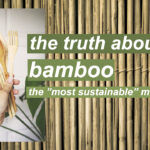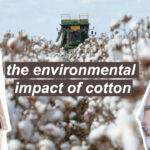Usage and origin
While the global, and especially the European use of bamboo is a fairly new phenomenon it is important to note that bamboo has played a part in building human civilization for the last 5000 years, in both Asia, Africa, and South America. Today it is estimated that more than 1 billion people are living in bamboo homes. That is 1/7th part of the global population. Bamboo is also used as a raw material in furniture production, paper making, construction, as fuel in the form of charcoal oil, as fiber for clothes, tableware, décor items, medicine, and healthcare products and as a food item, because bamboo naturally is high in several vitamins, minerals, and protein. Actually 200 different species of bamboo are used for human consumption.
Today, China is one of the world’s biggest exporter of bamboo with a collective market value of over 10 billion dollars, and it is also responsible for 35 million jobs. But bamboo is a crop with over 1200 subspecies and can be grown many places in the world. Today the majority of bamboo production comes from China and India, but we can also see countries like Canada growing its own bamboo. Why is it that then a plant is able to grow most places we still impart of Asia, my guess is because labour is cheap, just like with fast fashion, and actually lots of bamboos are not certified from third-parties which makes the production of it rather untransparent.

Sustainability
But before we dive into the issues with the industry, let’s take a look at what makes bamboo a green material. First of all, bamboo is not actually a type of wood, it’s a type of grass and although bigger than other grass types, comes with some of the same fast-growing benefits. Bamboo can grow in places that would otherwise not have been fit for vegetation, like rocky hills and slopes, so ideally bamboo production would not have to replace natural forests. Bamboo also grows fast, much faster than trees. Where a tree can take 30-50 years to become big enough to be used as timber. Whereas bamboo will take about 3 years to get established, and then it will take the new shoots 60 days to grow to a proper size. Therefore bamboo can replace tropical hardwood and reduce the deforestation of tropical forests. Bamboo production, especially in Africa have also had positive effects on local economies as communities are less dependent on the import of expensive wood from Europe because they can be self-sufficient in bamboo. A typical bamboo grove can also release 35% more oxygen into the atmosphere compared to similar-sized trees.

- Bamboo has a lower carbon footprint than FSC certified tropical hardwood
- Bamboo products imported to Europe have more eco-costs than local European softwood.
- Bamboo has a higher yield than trees and currently bamboo has a higher market value
Because of the increased production of bamboo, as a result of higher demand from new consumers in Northern America and Europe, bamboo generates higher profit for farmers than trees, and that, although it sounds good, is actually a problem.
In China, it was reported that many farmers where turned natural forests, fields, and farmland into bamboo forests. As a result that could be a problem for China’s food supply, as well as a problem for the environment. When you cut down natural forests, in order to produce a certain product you create a mono-culture, in this case, it’s bamboo and a mono-culture can have devastating effects on natural habitats for animals, diversity, soil quality, and microbial activity, all elements that need to thrive in order to have a functioning ecosystem. On report found that between the late 80’s and the late ’90s 23-30% of China’s national forests were converted into bamboo production. This is from a report from 2014:
“(an) investigation revealed many environmental concerns associated with growing, harvesting, and converting bamboo to useful products. Problems reported throughout bamboo-producing regions included clearing of natural forests for the establishment of bamboo plantations; creation of monoculture plantations; loss of biodiversity; substantial use of fertilizers and pesticides despite claims that bamboo crops required neither of these treatments; and unsustainable harvesting of natural stands of bamboo. We concluded our earlier report with the observation that the unquestioned green status accorded bamboo products needed serious re-evaluation and that, at a minimum, third-party certification should be required before awarding any kind of green status to bamboo products.”

To conclude, although bamboo is a crop that has a lot of useful low impact properties, unsustainable farming methods are still used in some cases, and for a lot of conventionally available bamboo products, it seems that no third-party certifications are used to ensure that green goals are met. GOTS is one of those parties that ensure optimal organic cotton production, just for context. So what I take from this is that not any bamboo product is as sustainable as it could be, and going tons of aesthetically pleasing bamboo products from cheap suppliers or eBay/Wish like shops are properly produced very poorly. So when buying a bamboo product find companies and suppliers that seem transparent about their products or that offer details like if they use fertilizer, if it’s organic, where it’s grown etc. But if we buy a bamboo spoon as use that hundreds of times rather than a disposable plastic spoon, it’s still more sustainable, because reusables products always beat a single-use product.

What about pandas?
Although bamboo might be a material with benefits, how is the increased demand for bamboo affecting the panda population and their natural habitats? This is a fair question is pandas get about 98% of their daily calories and nutrients from bamboo. Pandas have previously been categorised as an endangered species with as little as 1800 wild pandas left in China in 2014. Luckily, the panda population shows a 17% percent increase through 2016. The panda’s delicate situation has been primarily caused by hunting and human intrusion on natural habitats, both for agricultural purposes, as well as for city expansions.
However, the bamboo that is often used for building materials and generally the types of bamboo that are increasingly popular, are not the same types of bamboo as the pandas are eating. But although the type of bamboo that pandas eat is not the same type, there is still the notion of habitat loss, which is one of the main reasons why pandas became endangered in the first place.
It is a good thing to note that pandas only live in the Sichuan, Shaanxi, and Gansu provinces in China, and as we know, bamboo is able to grow in places all over the world, so it is very likely that your bamboo products did not affect any pandas whatsoever. But to say that all bamboo production has no effect on the panda population is a stretch, as the report from 2014 show that although bamboo is able to grow in otherwise barren places, the forest is still cleared to make way for bamboo production in some cases, also in China.

Bamboo vs plastic
But… what about single-use bamboo? With plastic pollution becoming a global issue more and more restaurants, companies, and shops are choosing to offer bamboo disposables rather than plastic. This switch is always referred to as a more sustainable solution, but is it?
A report comparing the emissions of single-use plastic straws to the emissions from a bamboo straw shows that 1 plastic straw weighing in at 0.20 grams emits 1.45 grams of CO2 whereas a reusable bamboo straw weighing 3.8 grams emits 38.87 grams of CO2. The report also showed that 100% of the plastic straws were thrown out after 1 use, whereas the average bamboo straw was kept for 5 years, and 25% of them were composted. The bamboo straws would have replaced at least 27 plastic straws in order to have a lower emission rate than plastic, which in a span of 5 years is not unrealistic. But wait there is more
94% of the impact of the bamboo straw could be traced back to transportation emissions, only 2% of the overall impact came from the production of the product, 4% came from the packaging.

69% of the impact of the bamboo straw came from the impact of the embedded materials aka fossil materials. 7% came from the production of the plastic, 3% from packaging, 1% from the disposal, and 20% from transportation.
Bamboo reusables will automatically have a lower impact because they are reused, however, bamboo single-use cups, plates, cutlery, and bags which have been super popular is not necessarily lower in impact when it comes to CO2 emissions. But there are of course other factors to take into account. Plastic released micro plastic if it is littered in nature and produce a serious threat to wildlife because it never breaks down, that is not the case with bamboo. Because while bamboo is not really included in the most recycling program, it is fully compostable. As long as it is actually composted. However most consumers are throwing it out so it often ends up and landfill, and there is nothing sustainable about that.
Bamboo products can be sustainable if they are reused and cared for, but disposable bamboo products that are just thrown away actually has a higher carbon footprint than plastic, and if it ends up in landfill it won’t biodegrade. The only upside is that it does not release microplastic and it is not based on fossil materials, but that’s a relatively low bar for sustainability. So reuse above all. At least to me, zero waste living is not only about refusing plastic but also refusing other single-use products, especially if they can be replaced with a reusable one.

But I have also seen tons of reusable bamboo products popping up that I feel that I need to include, and that’s the bamboo plastic products. You know, the to-go coffee mug in bamboo fiber as well as the children’s cutlery and plates in cute pastel colour, all plastic-free, made from 100% bamboo. Or what?
This plastic-looking bamboo material has many names and often goes by BPC, moulded bamboo or bamboo plastic composite, and the items look like plastic because in a lot of cases that’s what it is. Composite means that more materials are mixed together, and in this case, bamboo fiber is used as a filler or reinforcer. It is then mixed with matrix, something to hold the fibers in place, and that’s often a resin epoxy, which is a synthetic polymer, also classified as a plastic. The matrix can also be based on glass fiber, bio-plastic, or silicone. These products are often also treated with a chemical coating to give it its desired qualities. All of these processes make the, at once fully biodegrade bamboo, completely unable to break down naturally. These products, because some of them contain plastic, will also react and release harmful chemicals if, in contact with higher temperatures like hot coffee, just like 100% plastic products can.

Conclusion
Bamboo is an amazing renewable material that has the potential of producing many low impact products, but at this point, it is not without environmental cost, as many of bamboo’s potential qualities are not always realised. Like bamboos ability to grow on rocks and slopes, and yet natural forests are converted to bamboo plantations. My point is merely that the sustainability of bamboo should not be accepted based on what it CAN be produced but rather how it IS being produced. Sustainability cannot be reached without the entire supply chain in mind.
- Bamboo production is ideally one of the most sustainable on earth, but realistically it is still flawed and lacks transparency and certifications.
- Opting reusable bamboo for single-use plastic is definitely a good eco switch, but using single-use bamboo products is less so.
- Processed bamboo fiber products are not always free from plastic and can make the materials harder to compost and they are not necessarily free from harmful chemicals just because there is bamboo in it.
If you have bamboo products in your house then use them, and if you want to acquire bamboo products that you really need, then get it. But when it comes to bamboo disposables I am going to keep bringing my reusables on picnics.





Great post and very much to the point! There are so many products that can be produced from bamboo if produced properly with eco-friendly manufacturing in mind. Love the products and better manufacturing Methods should continue to be researched in some cases as with all manufacturing processes whether it be bamboo or other materials.